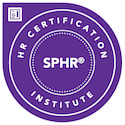 There are a number of activities that need to be completed to ensure a smooth and legal transition when an employee leaves, either voluntarily or involuntarily. The best way to ensure that none of these activities gets overlooked is to incorporate a Termination Checklist as part of your standard termination procedures. This is especially important for involuntary terminations as an oversight or error may have serious legal ramifications.
There are a number of activities that need to be completed to ensure a smooth and legal transition when an employee leaves, either voluntarily or involuntarily. The best way to ensure that none of these activities gets overlooked is to incorporate a Termination Checklist as part of your standard termination procedures. This is especially important for involuntary terminations as an oversight or error may have serious legal ramifications.
If you are terminating an employee for performance issues, be sure you have written documentation describing the issue, the steps taken to resolve it, and the results. Even though California is an “at-will” state, detailed documentation is your best defense if a legal action transpires. When in doubt, speak with a California employment attorney.
Also, remember that for involuntary terminations you need to give the employee their final paycheck immediately upon termination. For voluntary terminations the due date for the final check depends on the amount of notice the employee gives. If the employee gives less than 72 “clock” hours notice, you have 72 hours from the time of notice to issue the final check. If an employee gives more than 72 hours notice, you must issue the final paycheck on the employee’s last day of work. Also, any outstanding expense reports must be paid on termination.
As part of your regular termination process be sure you also address the following items:
Benefits – related notices to provide (if applicable):
- COBRA benefits coverage information should be sent to the departing employee’s home address
- COBRA Notice to Plan Administrator of Cal-COBRA Notice to Carrier
- HIPPA Notice
- Health Insurance Premium (HIPP) Notices (California only)
- Stock Option Closing Statement
- 401(k) plan information should be sent to the departing employee’s home address
Other Items/Forms to provide:
- Copy of the Non-Disclosure/Confidentiality Agreement or Policy (Best Practice)
- Notice to Employee as to Change in Relationship (California only)
- EDD Form 2320 For Your Benefit
Examples of property to be collected:
- Building and desk keys
- ID/security badge
- Laptop, software, hardware, etc.
- Cell phones
- Company tools and equipment
- User ID/passwords (voicemail, computer)
- Files and other miscellaneous company-owned items
Also, remove the terminating employee’s access to email, the network, the company intranet and any other programs or proprietary information meant solely for the use of employees. Ask the employee to provide their most recent address and contact information (phone, email) for W-2s and any other follow up communications. Remind them to contact you in the event they move prior to year end.
You may also want to conduct an exit interview to learn more about the employee’s experience at your company.


